 The Lessard-Sams Outdoor Heritage Council
recently issued its request
for 2017-‘18 funding proposals. The grants are for projects that protect,
restore and enhance wetlands, prairies, forests, and habitat. The council expects
about $100 million to be available for projects starting July 1, 2017. The
council may revise this estimate after November 2016. Submissions are due May 26,
2016 and must be done electronically.
Council
staff are available to assist applicants. For help with writing proposals,
contact Sandy Smith by email or
phone at 651-297-7141 to
set up an appointment.
The minimum request is $400,000. Lower requests should go
to the Conservation Partners Legacy Program.
The
council makes annual recommendations to the Minnesota Legislature on
appropriations from the Outdoor Heritage Council, which is funded by the Clean
Water, Land and Legacy Amendment.
|
The
Clean Water Partnership (CWP) program continues to accept applications from
local governmental units interested in loan funding to lead a nonpoint source
pollution control project for protection or restoration of Minnesota’s water
bodies. Applications can be made at any time and more than $9 million is available.
The
Clean Water Partnership Loan Program Request for Proposals (RFP) and other
details can be found on the CWP
website. The application and related information will be accepted
through an email address listed in the RFP.
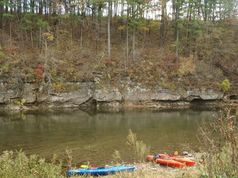
Reports on protecting and
restoring the Root
River watershed
are now open for public comment. This area in southeastern Minnesota provides
high quality streams for trout fishing and other recreation. However, some
parts of streams suffer from bacteria levels that may make the water unsafe for
swimming, soil and sediment that cloud the water, and nitrate levels that may
stress aquatic life like fish.
The MPCA is accepting comments
on the reports through May 16. The first report is on the Total
Maximum Daily Load (TMDL) study that identifies pollutants in
the Root River and tributaries, determines the reductions needed, and
recommends actions to take like planting cover crops and reducing runoff. The
second report outlines Watershed
Restoration and Protection Strategies (WRAPS) for the Root River to restore and protect the streams such as planting buffers of
deep-rooted plants.
This area of Minnesota is
vulnerable to pollution because of its karst landscape. In karst, only a thin
layer of soil covers the porous bedrock underneath and allows pollutants on the
land to easily reach groundwater used for drinking. In a karst landscape, where
caves and sinkholes are common, streams and groundwater mix as water moves
through the bedrock. Because of karst, there are no lakes in this watershed.
Many groups are participating
in restoration and protection efforts, including the Fillmore Soil and Water
Conservation District, the newly formed non-profit group Friends of the Root
River, cities in the watershed, and several state and local organizations. Individuals
are always encouraged to get involved.
For more information on Root
River studies or to submit written comments, contact Shaina Keseley, MPCA
project manager (email Shaina.keseley@state.mn.us, phone
507-206-2622).
Comments, which must be in writing,
are due by 4:30 p.m. on May 16. The comments must specify which report you are
commenting on, include a statement of your interest in the report, and the
action you wish the MPCA to take, including specific references to sections of
the draft report you believe should be changed and the reasons for making those
changes.
|
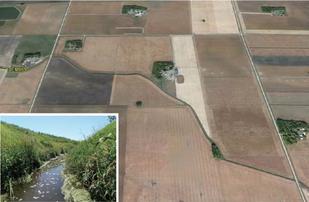
Buffers are important for clean
water and healthy aquatic life, according to an MPCA analysis of water
monitoring and buffer sites across Minnesota.
Agency scientists examined the
quality of buffers next to and upstream of more than 3,500 fish monitoring
sites and 3,000 macroinvertebrate (bug) monitoring sites throughout the state
to see if buffers really make a difference to water quality. The scientists
focused on biology because that reflects conditions of water quality over time.
Buffer quality was measured by calculating the percentage of the buffer area
that was undisturbed by human activities.
The data analysis clearly shows that
buffers are important for clean water and healthy aquatic life (fish and bugs).
And that the greater the percentage of stream channel that is buffered upstream
of a monitoring site, the better the health of the aquatic life. Watersheds
with missing or disturbed buffers have less healthy fish and bug communities.
The buffer zone is critical to
protecting and restoring water quality and healthy aquatic life, natural stream
functions and aquatic habitat due to its immediate proximity to the water.
On average, streams with:
- More than 85% intact buffers have
excellent aquatic life
- About 50% – 85% intact buffers have
good aquatic life
- Between 25% – 50% intact buffers
have fair aquatic life
- Less than 25% intact buffers have
poor or very poor aquatic life
Scientists compared the buffer quality
to the health of the fish and invertebrate communities at each site. The sites
were grouped into “excellent,” “good,” “fair,” “poor,” and “very poor”
categories based on the health of the biological community.
See the buffer
analysis on the MPCA website, including photos and charts for four example
sites in the Lower Minnesota, Zumbro, Blue Earth and Sauk River watersheds.
Photo above is County Ditch 13A in the Lower Minnesota watershed where the
buffer zone is in poor condition and the in-stream habitat is severely degraded in the upstream
watershed along with the fish and bug communities.
|
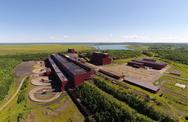 The State of Minnesota has launched a new web portal dedicated
to Minnesota’s permitting process for PolyMet’s proposed NorthMet mining
project at www.mn.gov/polymet. This project is complex and will need permits from
several state agencies in order to proceed. The web portal provides basic
permitting information and directs users to agency websites with more detail.
PolyMet
Mining Corp. is proposing to develop a mine and processing plant to extract
copper, nickel, and precious metals from the NorthMet Deposit in northeastern
Minnesota.
PolyMet’s
proposed NorthMet project would be located in the St. Louis River watershed on
the eastern end of the Mesabi Iron Range, about 6 miles south of Babbitt and 1
mile south of the existing Northshore (iron ore) Mine. Processing of the ore
would take place at the former LTV taconite plant near Hoyt Lakes.
The
total project area would include a new open pit mine, temporary and permanent
waste rock disposal areas, recommissioning of an existing processing plant and
tailings basin, and refurbishment of an existing 7-mile railroad and utilities
corridor between the mine and plant sites.
You can sign up on the portal to receive email updates on the NorthMet project
as it continues into the permitting process.
|
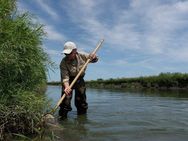 Minnesota Gov. Mark Dayton has
proclaimed April 18-April 22 as Water Action Week. With many Minnesotans
planning events on Earth Day
April 22, Dayton is encouraging action all week to protect and restore the
state’s water resources. The governor will be visiting classrooms and water
treatment facilities to highlight his call for an ethic of clean water
practices.
This is a great time for
local partners to call attention to the work they do every day for Minnesota’s
water resources. The MPCA thanks all the SWCDs, watershed groups, cities and
counties for their input, support and programs to protect and restore water
resources.
|
In honor of Water Action Week, the MPCA features these success stories:
 The Minnesota Pollution Control Agency (MPCA) is seeking volunteers for its Citizen Stream and Citizen Lake Monitoring Programs. Program volunteers track water clarity, which helps the MPCA learn more about a lake or stream’s water quality.
“Thirty years ago, when I started monitoring Long Lost Lake, I thought it would be an interesting thing to do for a summer. Little did I know that I would still be at it three decades later. I guess you could say I’m hooked,” says Jim Svobodny, volunteer (photo at right).
The MPCA uses data collected by Jim and other volunteers to determine whether water quality is improving or declining in specific water bodies or watersheds. Identifying these trends is one of the first steps in protecting or improving water quality throughout the state.
More than 1,300 Minnesotans participate in the Citizen Monitoring Programs, but in order to reach all water bodies across Minnesota, more volunteers are needed. “69,000 miles of rivers and over 12,000 lakes is a lot of water to cover,” says Laurie Sovell, coordinator of the MPCA’s Citizen Stream Monitoring Program. “We are looking for people curious about local water bodies and passionate about protecting our state’s water resources.”
As part of the program, volunteers are asked to perform a short and simple water clarity test at their favorite lake or stream, once per week throughout the summer. Equipment and training are provided by the MPCA and no prior experience is necessary. For some lakes and streams, volunteer-collected data is the only data available, making citizen involvement critical to ensuring the lasting health of Minnesota’s waters.
Find out if your favorite lake or stream needs monitoring by using the MPCA’s online interactive map.
|
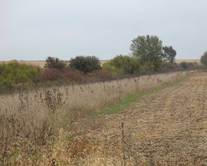 The Board of Water and Soil Resources (BWSR) is seeking public
comment on key components of its Buffer and Excessive Soil Loss programs. The Requests for Comment and supporting documents are available on the BWSR
Buffer Program website and include
specific questions related to program development. BWSR is looking for
feedback on:
- Program
timeline
- Technical
aspects of the program
- Administrative
processes‘Other Waters’ – waters not covered under the DNR’s mapping
process as determined by the local soil and water conservation district
- Process
for the Soil Erosion law implementation
The BWSR Board will review draft policy and guidance for the
buffer program at its June 2016 Board meeting. The Soil Loss program will
undergo rulemaking in the fall. For information, visit the DNR Buffer Mapping
Project website.
Information and comments on buffer and soil loss program implementation will be
accepted until 4:30 p.m. on May 4, 2016. Comments may be submitted via email to
buffers.bwsr@state.mn.us
or via U.S. mail to David Weirens, Asst. Director for Programs and Policy,
BWSR, 520 Lafayette Road, St. Paul, MN 55155.
|
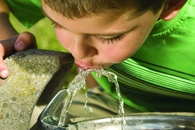 Pharmaceuticals,
pesticides, industrial effluents, and personal care products are some of the contaminants of emerging concern
in drinking water. The Minnesota Dept. of Health will hold a forum to gather
stakeholder feedback on contaminants of emerging concern in drinking water on Tuesday,
May 3, from 8 a.m. to noon, at the Wilder Foundation in St. Paul. The program
will include information on special projects, financial support from the health
department, and discussion of future work on contaminants of emerging concern. If
planning on attending, please RSVP to health.legacy@state.mn.us.
|
|